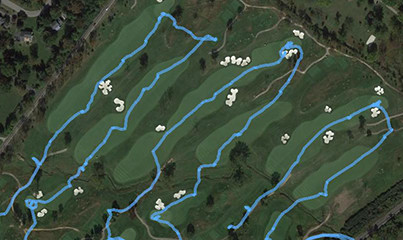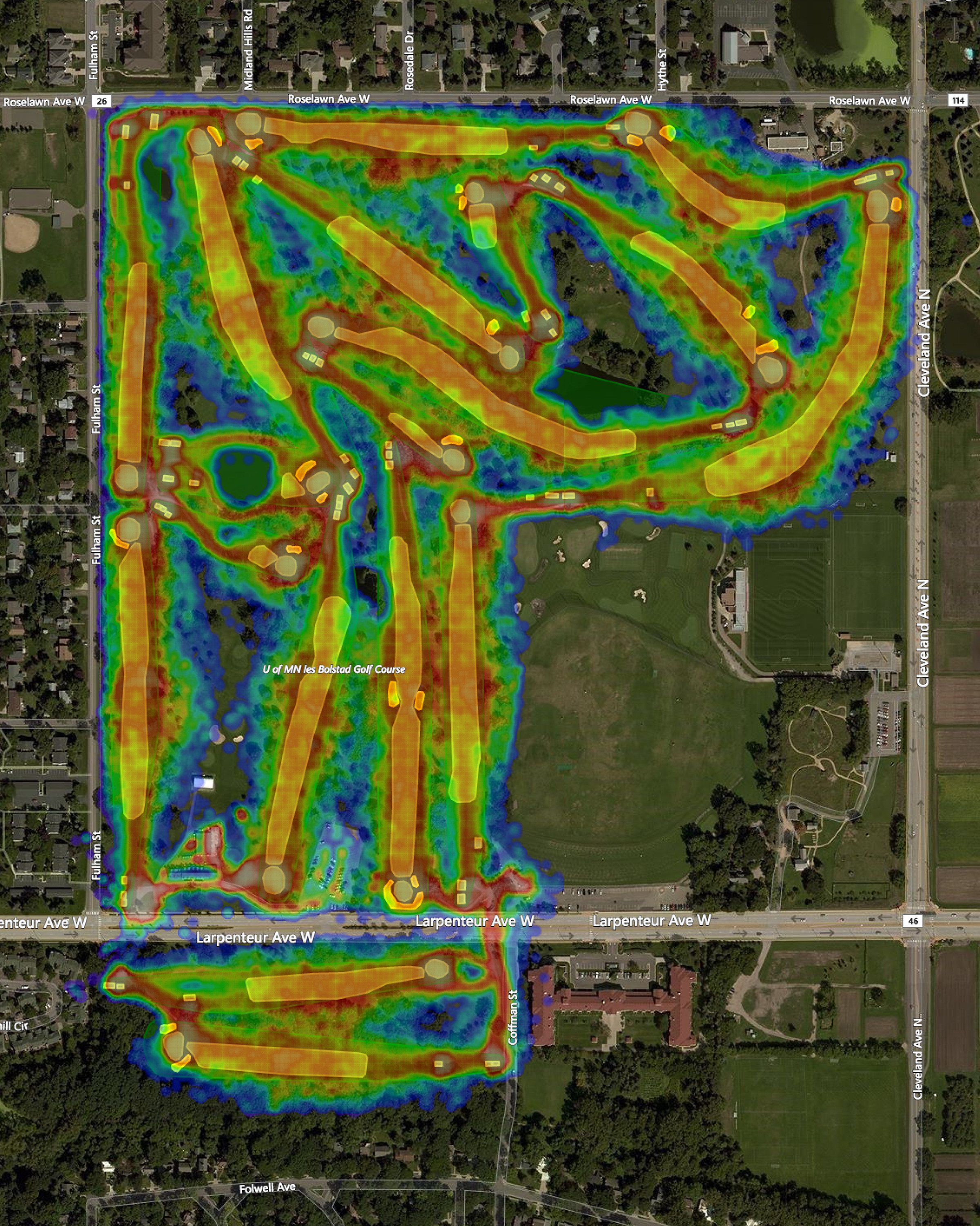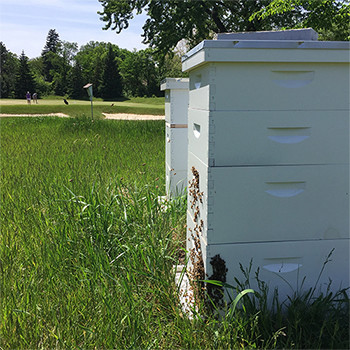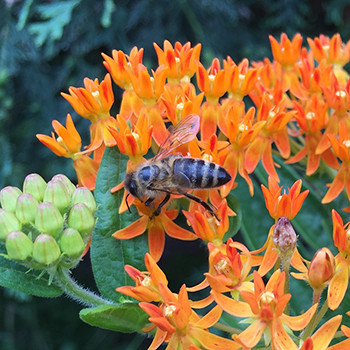By Parker Anderson
Thursday, November 30, 2017
Recently, the Science of the Green Initiative at the University of Minnesota, in partnership with the United States Golf Association (USGA), collected data on golf pace of play to examine the impacts of green speed on pace of play at seven golf courses of differing characteristics around the United States. The implications of the data collected, however, are far greater than just measuring the time each player spent on the putting greens; the results have additional value regarding golf facility sustainability and productivity.
Golfers in the study received a small GPS device to hold in their pocket for their round. Each GPS device captured the player’s latitude, longitude, and speed every five seconds. This data then created a GPS “track” of how that player used the golf course for that round (IFigure 1).
Because thousands of golfers participated, the results provide profound insights on the traffic patterns and flows of a golf course. Utilizing the USGA’s new software, the Resource Management Tool, the collected data was used to generate a “heat map” (Figure 2) of the University of Minnesota Les Bolstad Golf Course (and the other courses that participated in the study). High traffic areas are shown in red, while down the spectrum, low traffic areas are shown in blue. No-traffic areas (those without a color overlay) are locations where very few if any golfers visited during their round.
This green speed and pace of play data has significant implications for economic, environmental, and social sustainability of golf course management. The GPS golfer data collected gives golf facilities an overview of how their course is used. This process revealed high traffic areas that may benefit from adjustments in turf management. For instance, from an economic perspective, turf species with greater tolerance for traffic could be substituted in those spaces to prevent poor turf health and playing conditions.
The results also exposed areas with very little or no traffic that do not require continual maintenance. These low/no-traffic areas could be utilized for other uses while not negatively affecting player enjoyment, and potentially add value and community support of the golf facility. Examples of enhanced uses include pollinator habitat (Figures 3 and 4) for pollination and species conservation, rain gardens for capturing stormwater, gardens for use in the food and beverage operation, or a turfgrass nursery (to name a few).
On average, the area of a golf facility is 66% turfgrass that is managed for play. The other 34% of the space is often underutilized. Collecting data on the course provides the understanding to build in additional value and quite likely reduce golf course management costs. Integrating beneficial land uses in these underutilized spaces provides opportunities to connect the golf course to the local community and environmental organizations. When more outside groups are engaged in the golf course, there is an increase in potential golfers, so in part, growing pollinator gardens on golf courses equates to growing the game. Additionally, this is not a zero-sum game, this is a win-win situation. There is no conflict between the recreational experience and no-play area utilization. In fact, the golfer enjoyment may even increase when these areas are designed successfully.
When extrapolating these ideas to an industry level, optimizing underutilized areas on golf courses transforms the golf industry and its relationship to the environment and society. In a time where significant challenges in golf participation are looming, engaging non-golfers in a discussion of the benefits of golf courses in their communities engages new golfers and in turn grows the game.



